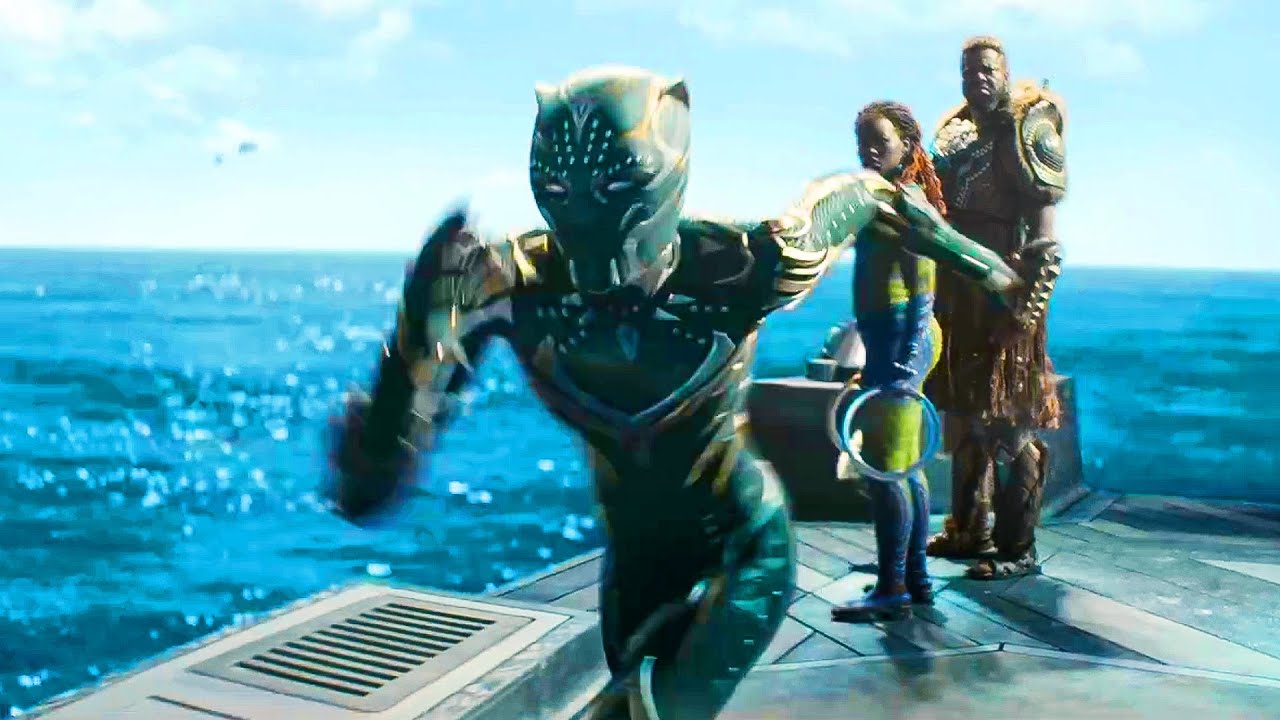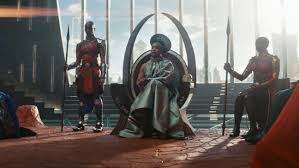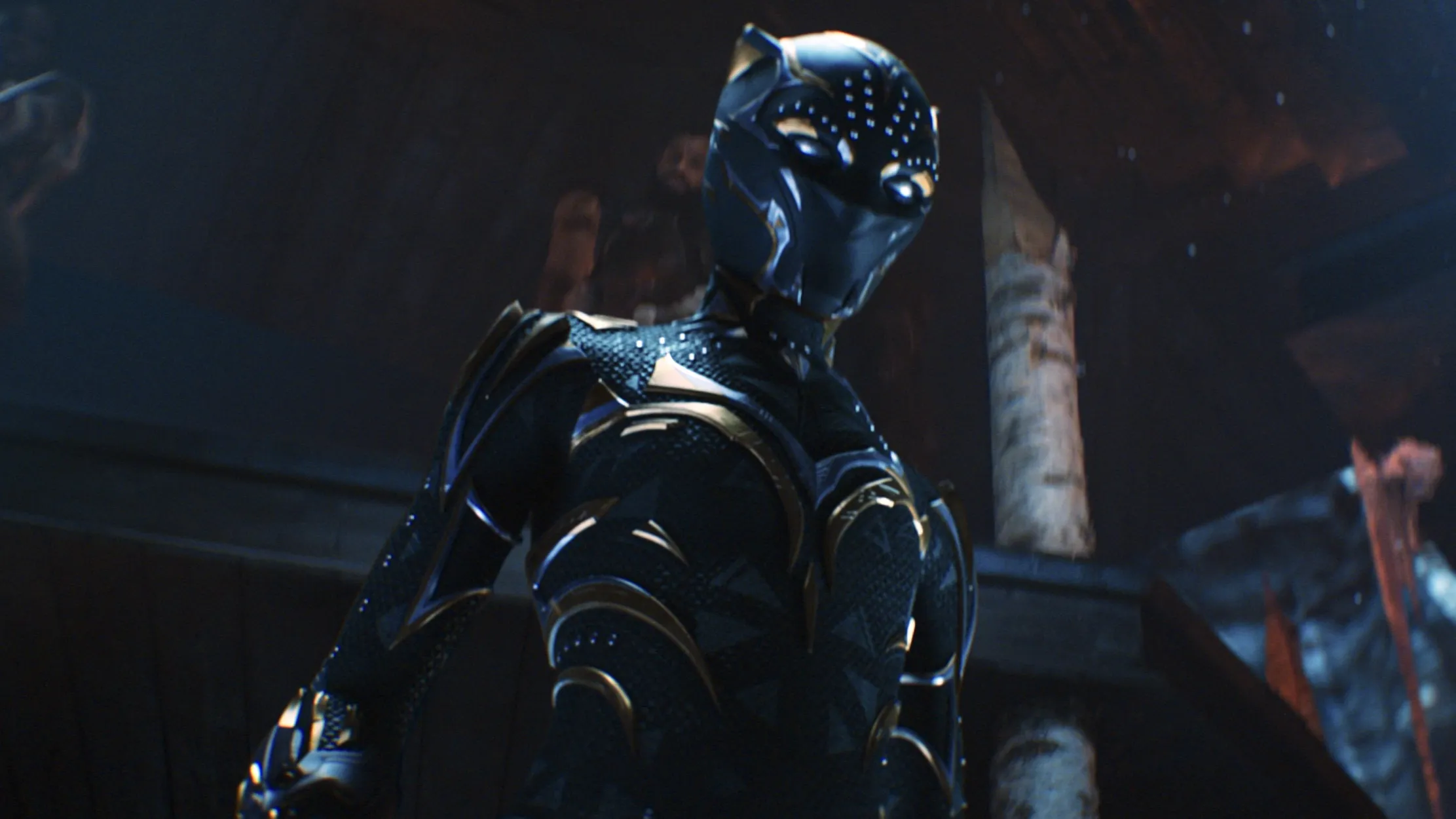Black Panther: Wakanda Forever (2022)

Black Panther: Wakanda Forever (2022) Review – A Powerful Tribute and a Bold New Chapter
Introduction
Black Panther: Wakanda Forever (2022) is the much-anticipated sequel to Marvel’s groundbreaking Black Panther (2018). Directed by Ryan Coogler, the film honors the legacy of the late Chadwick Boseman while introducing new characters and expanding the lore of Wakanda. With a gripping storyline, emotional performances, and stunning visuals, Wakanda Forever delivers a compelling narrative that balances grief, resilience, and the future of Wakanda. This review explores the film’s plot, themes, performances, cinematography, and cultural impact.
Plot Summary
The film begins with the Wakandans mourning the death of King T’Challa (Chadwick Boseman). Queen Ramonda (Angela Bassett) assumes the throne while Shuri (Letitia Wright) grapples with guilt and grief, struggling to recreate the heart-shaped herb that gave Black Panther his powers.
As Wakanda navigates its uncertain future, a new threat emerges in the form of Namor (Tenoch Huerta), the ruler of the underwater kingdom Talokan. Seeking to protect his people from the surface world’s exploitation, Namor presents Wakanda with an ultimatum: join forces with Talokan or face destruction.
Shuri, alongside Nakia (Lupita Nyong’o) and Okoye (Danai Gurira), embarks on a journey of self-discovery and leadership as she steps into her role as Wakanda’s protector. The film culminates in a dramatic battle between Wakanda and Talokan, reshaping the future of both nations.
Themes and Symbolism
Grief and Legacy
A central theme of the film is the mourning of T’Challa and how each character processes their grief. Shuri’s struggle to embrace tradition while seeking scientific solutions represents the tension between honoring the past and looking to the future.
Cultural Identity and Heritage
The introduction of Talokan, inspired by Mesoamerican culture, adds depth to the film’s exploration of indigenous identities and colonial histories. Wakanda and Talokan share common struggles but differ in their approaches to survival, leading to a fascinating cultural and ideological clash.
Leadership and Responsibility
Queen Ramonda’s leadership and Shuri’s evolution into the Black Panther showcase different styles of governance and responsibility. The film asks what it truly means to lead and protect a nation in times of crisis.
Performances
Letitia Wright as Shuri
Wright delivers a standout performance, portraying Shuri’s emotional journey from grief to empowerment with depth and sincerity. Her transformation into the Black Panther is both earned and moving.
Angela Bassett as Queen Ramonda
Bassett commands the screen with a regal and emotionally charged performance. Her portrayal of Ramonda as a grieving mother and steadfast ruler is one of the film’s highlights.
Tenoch Huerta as Namor
Huerta’s portrayal of Namor is captivating, bringing complexity and nuance to the character. His presence is both menacing and sympathetic, making him one of the most compelling antagonists in the MCU.
Danai Gurira and Lupita Nyong’o
Gurira’s Okoye provides some of the film’s most intense moments, while Nyong’o’s Nakia adds emotional depth and wisdom. Both characters play crucial roles in the narrative’s development.
Cinematography and Visual Effects
The film’s cinematography, led by Autumn Durald Arkapaw, is breathtaking. From the vibrant cityscapes of Wakanda to the eerie depths of Talokan, every frame is meticulously crafted. The underwater sequences are particularly stunning, offering a fresh visual aesthetic to the MCU.
The special effects and costume design continue the high standard set by the first film. Ruth E. Carter’s costumes brilliantly incorporate African and Mesoamerican influences, making each culture visually distinct.
Music and Soundtrack
Ludwig Göransson returns to compose the score, blending traditional African sounds with Latin American influences to reflect the dual cultures represented in the film. The soundtrack also features powerful tracks, including Rihanna’s emotional ballad Lift Me Up, which serves as a tribute to Chadwick Boseman.
Cultural Impact and Legacy
Beyond its box office success, Wakanda Forever carries immense cultural significance. The film provides representation for Black and Indigenous communities, showcasing their histories and struggles with authenticity. The portrayal of Namor as a Mesoamerican anti-hero is a groundbreaking addition to mainstream superhero films.
The film also serves as a tribute to Chadwick Boseman, honoring his legacy while allowing Wakanda’s story to continue. It proves that the Black Panther franchise is more than just a superhero story—it is a movement celebrating cultural pride, resilience, and the importance of legacy.
Final Verdict
Black Panther: Wakanda Forever is an emotional, visually stunning, and thematically rich sequel that honors the past while looking toward the future. With powerful performances, breathtaking cinematography, and a deeply resonant story, the film cements its place as one of the strongest entries in the Marvel Cinematic Universe.











